Porto de Galinhas is a major tourist destination. The beach is famous for its bright-water beaches and the natural pools. Porto de Galinhas is a beach located in the municipality of Ipojuca, in the state of Pernambuco, Brazil. The region has clear and warm water pools formed between corals, in addition to estuaries, mangroves, white sand, and coconut trees. The entire region is very popular among tourists and surfers of different nationalities. Every year it receives over 720,000 tourists. The region is also rich in gastronomic, sports, ecological and cultural experiences and has a top quality hotel infrastructure, with more than 13,000 beds distributed in hotels, inns and resorts. Elected for ten consecutive times the best beach in the country by “Viagem & Turismo” magazine, Porto de Galinhas is also the fifth most sought after destination in Brazil for tourism.
Between Porto de Galinhas and Praia dos Carneiros (another important tourist destination in Pernambuco), there is the island of Santo Aleixo. Towards the north there are the beaches of Muro Alto, formed by an extensive barrier of reefs, and Calhetas, much visited for the practice of zip lines.
There are sunny days in all months of the year, but the best time is from September to February, and the months with the most sunshine are October, November, and December.
BEACHES

PORTO DE GALINHAS
Elected ten consecutive times as the best beach in Brazil by "Viagem & Turismo" magazine, Porto
de Galinhas is the center of everything and it is the most popular beach in the region. Its 4 km
of white and beaten sand, coconut trees, and warm waters also bring together the entire
infrastructure of bars, restaurants, supermarkets, and handicraft shops that work even after
midnight in high season on streets that only circulate pedestrians. The beach hits are the
natural pools, where the people feel like being inside an aquarium of transparent waters and
full of colorful fish. The pools' differential is their proximity to the coast (a five-minute
journey on rafts that depart from the center of the village), which makes them the easiest to
reach in the entire Northeast of Brazil.
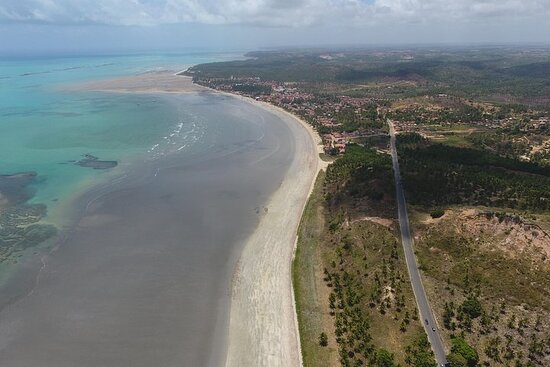
CACIMBAS
Cacimbas is the name of a container to store water. On this beach, it is materialized in a
natural pool of transparent water, surrounded by reefs, which are situated a few steps from the
chair or umbrella. This makes Cacimbas a perfect place for swimming at low tide. In some places,
the waves are stronger and attract surfers. Cacimbas also have caves carved into a rock bank by
the force of the sea. It is worth bringing a mask and snorkel to see this masterpiece of nature.
Access to Cacimbas must be done by the seaside in a 3 km walk, from Serrambi, on foot or by
buggy.
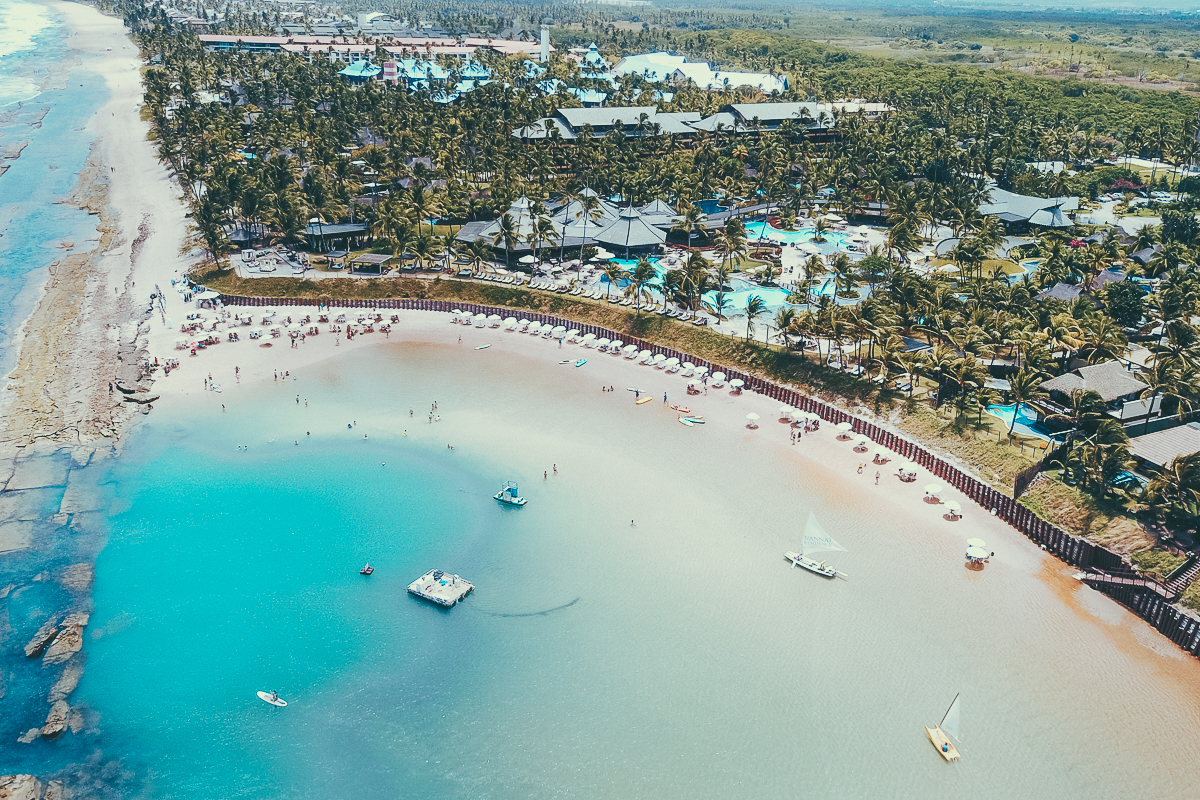
CAMBOA
The sound of wind and waves. That's all you can hear on this semi-deserted beach of white sand,
which has a coconut grove and a mangrove swamp along its 1.5 km length. Camboa is a Tupi word
that means “calm waters”. It is located at the river mouth of the Ipojuca River. The reefs form
a natural pool of calm and shallow water at low tide. The trip to Camboa also allows you to
observe the Port of Suape and Recife. Access to this beach must be by buggy, or on foot from
Muro Alto.
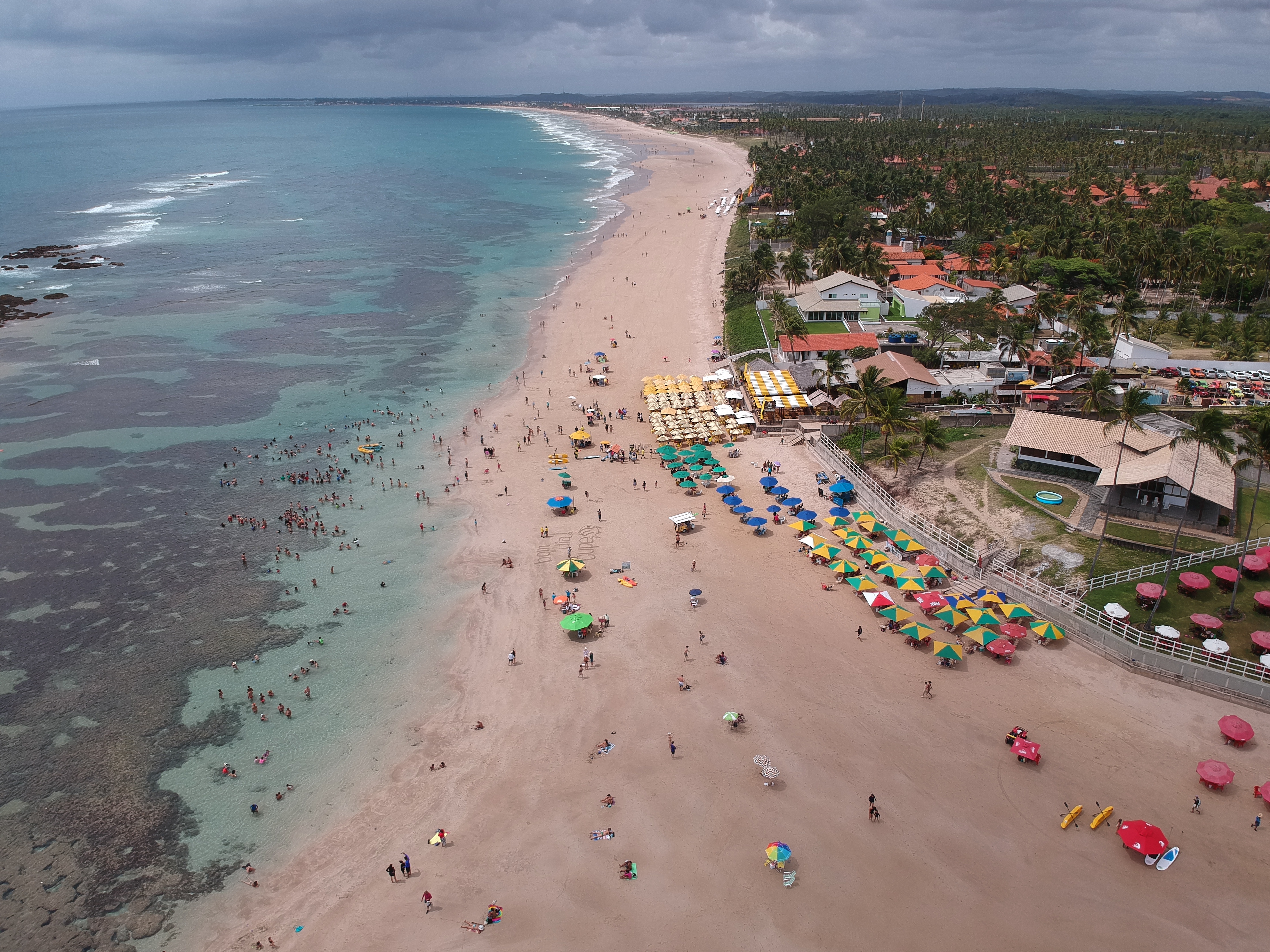
CUPE
Cupe beach brings together sports practitioners, visitors looking for the tranquility of natural
pools and ecological tourism enthusiasts. On the right side there are no reefs, which allows
surfing with strong and constant waves. On the other side, the reefs form little-known natural
pools that never dry out much. Another distinctive feature is that, in some places, Cupe allows
you to see the birth of sea turtles since it is a spawning and hatching point for eggs. Cupe is
between Muro Alto and Porto de Galinhas, and can be accessed via the PE-09 highway.
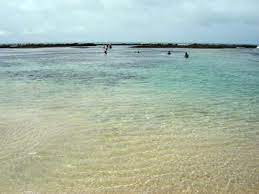
ENSEADINHA
Enseadinha beach is on the other side of Pontal de Maracaípe. The beach is similar to its
neighbor since it has coral reefs, calm waves, and mangrove vegetation. It is possible to bathe
in the river and the sea areas and take a raft, boat, and kayak trips. Enseadinha can be
accessed from Pontal on foot during low tide. Another way to get there, also on foot, is from
Serrambi beach, where there are taxis and buggies to get back to Porto de Galinhas.
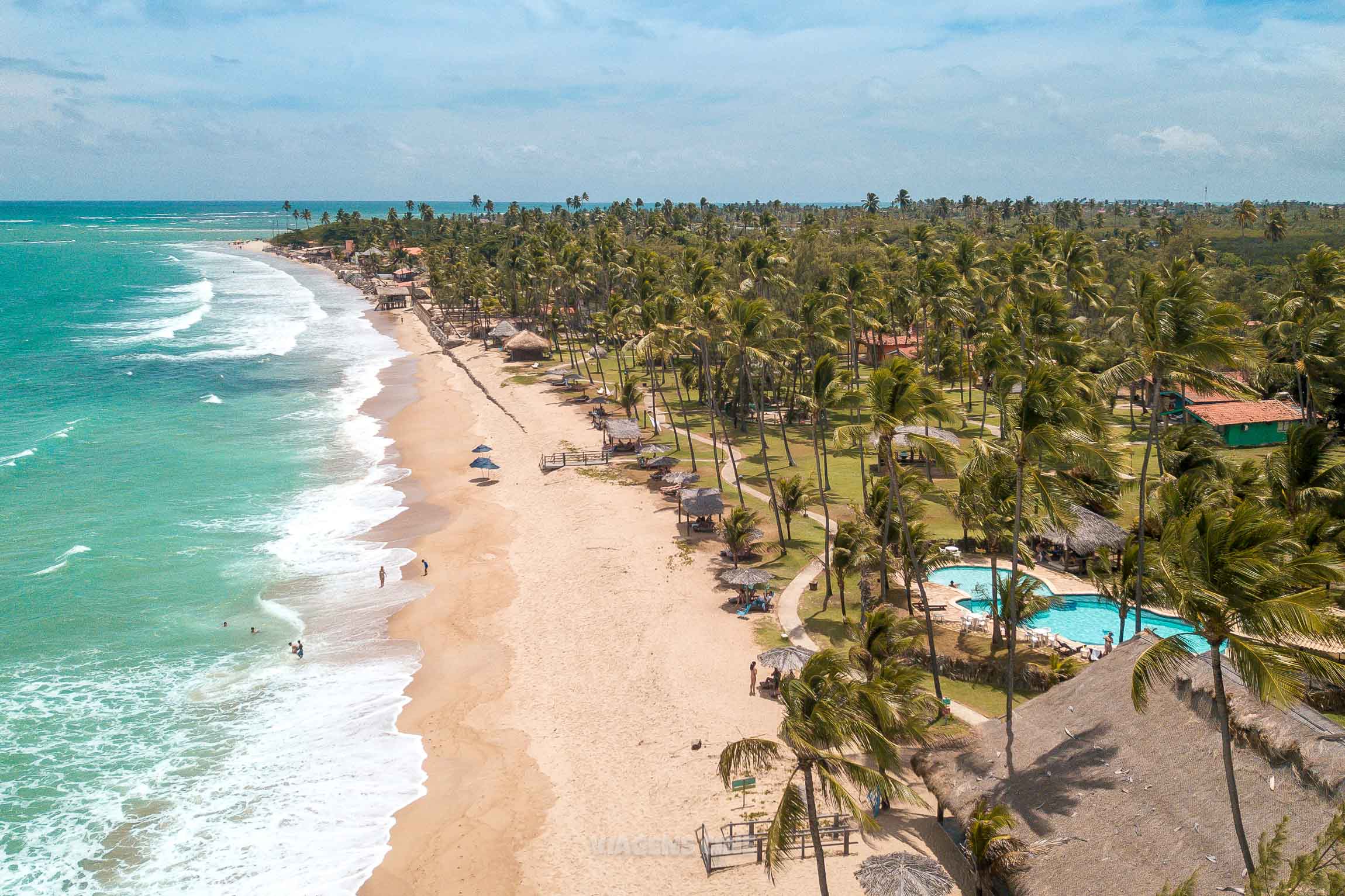
MARACAÍPE
Maracaípe beach is known as the surfers' paradise. It hosts national and international
championships in the sport because of the high waves and clear waters. This makes her dangerous
for bathing, but the young crowd makes the atmosphere relaxed and conducive to flirting. With
bars that serve meals and snacks, Maracaípe also has many concerts in the summer. The beach name
comes from two Tupi words: maracá means sound and ípe means river, which forms the expression
“the sound of the river”.
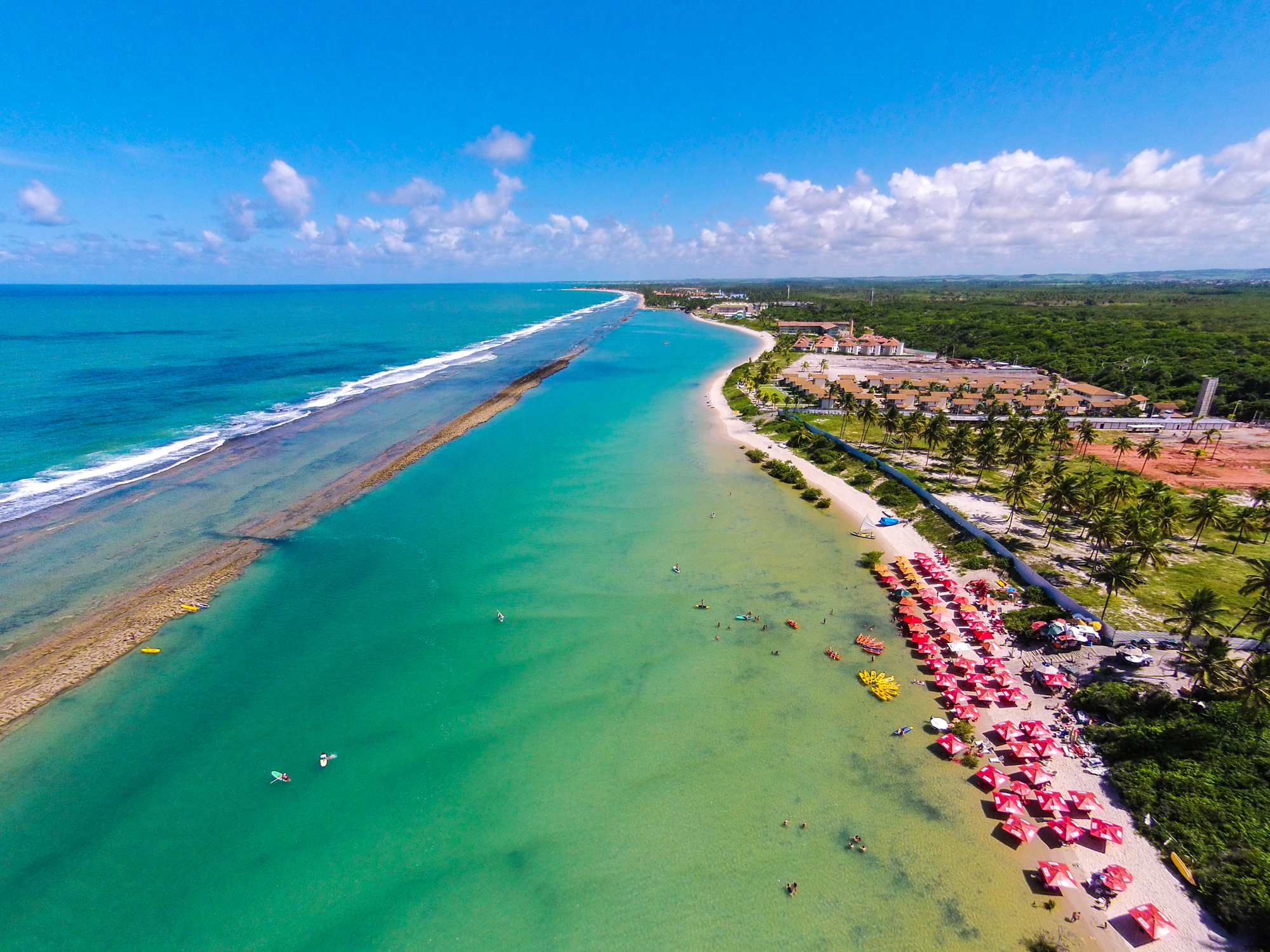
MURO ALTO
This beach is for families with children because of the natural pools formed between the sand
and a coral barrier. The dammed-up, crystal-clear, warm water becomes a waveless, saltwater lake
where children can play without worries, in the water or small sailing boats and kayaks. With 3
km long, Muro Alto is one of the beaches that offers the best infrastructure to the guest, with
hotels and resorts. From the beach, it is also possible to hire a buggy ride to Pontal de
Maracaípe.
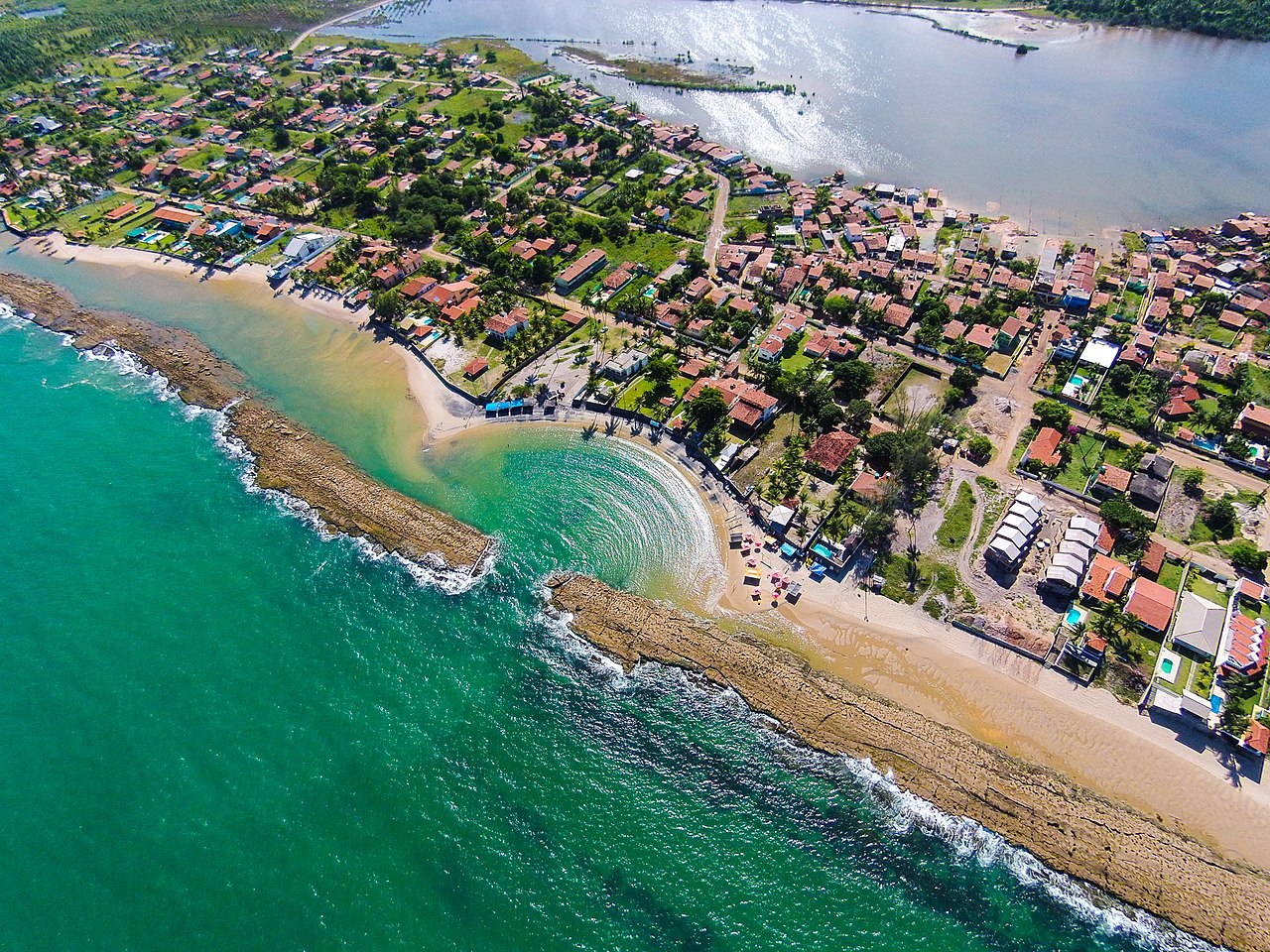
SERRAMBI
Neighboring Maracaípe, Serrambi is a quiet beach with a good service structure. A perfect place
to rest and relax in the natural pools and take a walk in the late afternoon. Once there, it is
worth going up to Igreja do Outeiro to have the best view of the city. In Serrambi there is also
space for water sports such as surfing, kayaking, windsurfing, speedboat rides, jet skiing and
autonomous diving. One of the tours takes you to the island of Santo Aleixo, where you can see
shipwrecks.
TOURIST ACTIVITIES
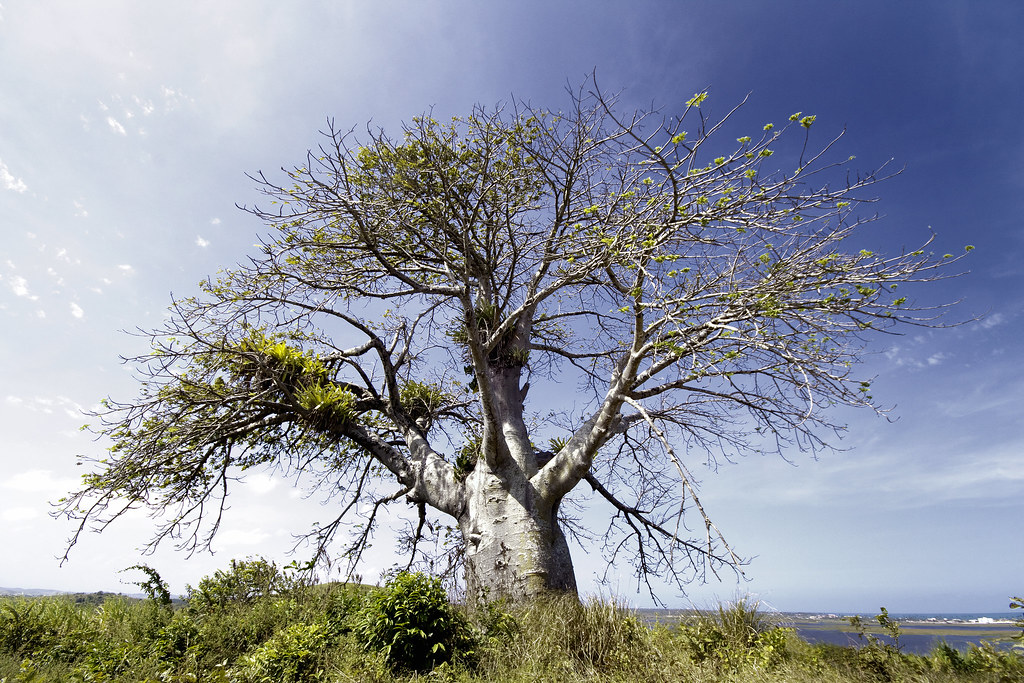
VISITING THE BAOBAB
Possibly planted by African slaves, the baobab is a tree that became a tourist attraction in
Porto de Galinhas. Being approximately 400 years old (it can reach a thousand years), the
largest specimen in the region has a 4.5 meters trunk in diameter and is located on Rua do
Colégio, in the district of Nossa Senhora do Ó, which is 11 km from Porto de Galinhas and 100
meters from Nossa Senhora do Ó church. The visit to the site also provides a history lesson from
the time when Brazil was discovered by Portugal.
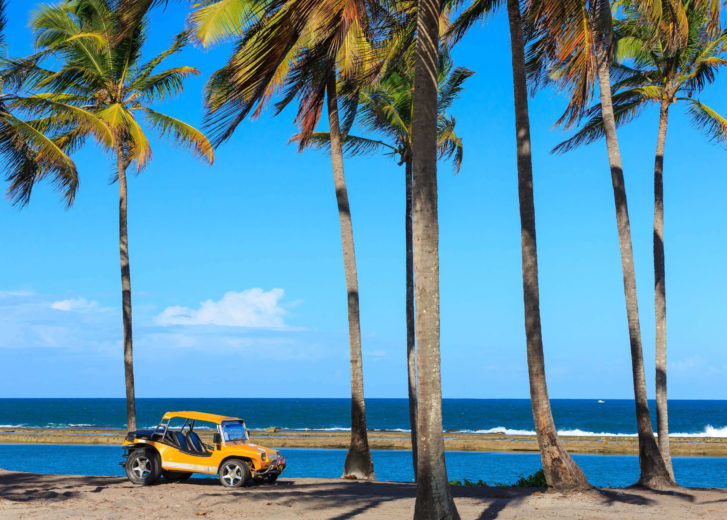
BUGGY RIDES
In addition to Porto de Galinhas, the municipality of Ipojuca has eleven beaches. Some of those
beaches are almost deserted, to which access is made by buggy through trails in the soft sand.
During the tour, visitors can admire beautiful landscapes while feeling the wind hitting their
faces. The most common one is called Ponta a Ponta, which takes tourists to the beaches of Cupe,
Muro Alto, Maracaípe, and Pontal de Maracaípe. There are hundreds of buggy drivers that can be
hired through hotels in the region.
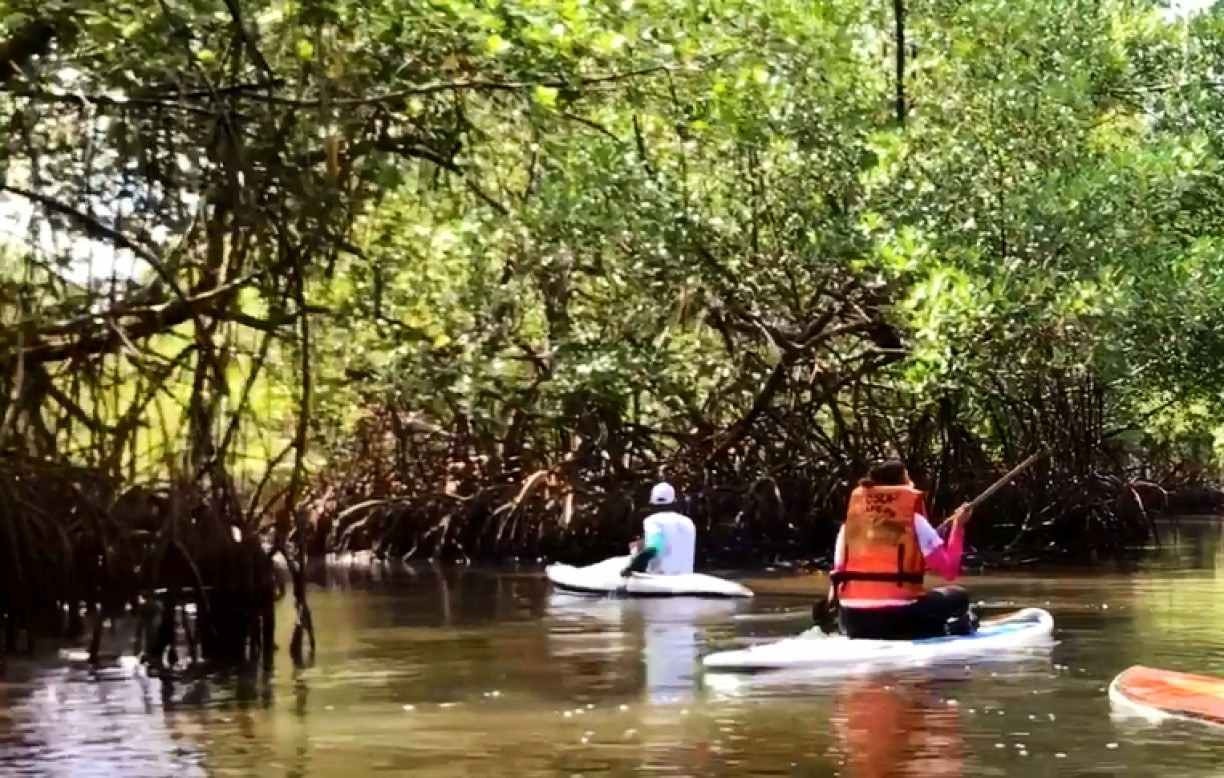
CANOEING IN THE MANGROVE
Another way of admiring the exotic beauty of the mangrove is the kayak tour. The route starts at
Mangue Jump and heads towards the mouth of the Maracaípe River. The visitor passes through the
region of Feitera village and stops at Prainha before reaching the main point of the route: the
meeting of the river with the ocean. The tour is organized by Pé no Mangue Ecoturismo e
Aventura.

NAUTICAL AND EXTREME SPORTS
If Maracaípe beach is a stronghold for surfers due to its waves that reach 2.5 meters high, in
neighboring Pontal de Maracaípe the strong winds favor the practice of kitesurfing, in which a
board is pulled by a kite. The sport of French origin mixes techniques of free flight,
windsurfing, water skiing, and surfing. To use the “flying boards” you need specialized
training, offered by the Pernambuco Kitesurf School. It is also possible to practice
windsurfing, kayaking, and even riding a speedboat and jet skis.

DIVING
Coral reefs, rock formations, and shipwrecks are attractions that visitors can only see
underwater. The best time for diving is from October to March when water visibility conditions
reach ten meters on the reefs near the beach and 25 meters in the open sea. In the region, there
are options such as free diving with mask, snorkel, fins, and vest, baptism with instructors and
guides, and also basic and advanced courses offered by several diving operators.